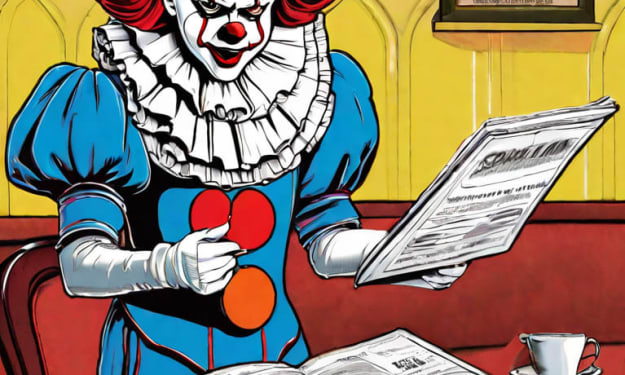The Evolution Of Star Wars Canon
How far we have come since 2014

September of 2014 was a new and exciting time for Star Wars fans. Disney had purchased Lucasfilm two years before. Star Wars Episode VII (the title hadn’t been announced yet) was in post-production. Star Wars comics were three months away from returning to Marvel. Sadly, the top-rated animated series Star Wars: The Clone Wars was canceled. However, shorts of the new animated series Star Wars Rebels were airing in anticipation of its premiere in October 2014. And the first new Star Wars canon novel, Star Wars: A New Dawn, was released on September 2, 2014. The snowball was just forming.
As each new piece of Star Wars content comes out, it seems like the new Star Wars canon began a long time ago at a bookstore near you. But, to think about where Star Wars is now with The High Republic publishing initiative (including the books and comics), The Mandoverse, and future projects, the feeling is the Star Wars story is generally in a good place. Things are connecting like they never have before. Finally, after seven years of new content, the results are paying off.
RELATED: New Book Reveals Qui-Gon Jinn's Legacy Lived On Outside Of The Jedi Order
But those first seeds were planted with A New Dawn and two months later with Tarkin. The anticipation for The Force Awakens was building exponentially with the Journey to The Force Awakens. Let’s face it, looking back, it was more like a trip around the block. But that’s the fun part. Looking back with a broader perspective and taking in where we were with Star Wars and now. As The Force Awakens approached, the first book in the Aftermath trilogy dropped. It’s safe to say most fans were expecting huge hints at what’s to come with the new movie. But, as Luke says, this is not going to go the way you think.
Seeds were planted in a much more strategically subtle way than expected. We got how the Empire was finally defeated at the Battle of Jakku then fled to the unknown regions to regroup at the Emperor’s command. And a certain bounty hunter’s armor and its new owner who recently popped up in the last season of The Mandalorian. It was one of those, “hey I remember that guy!” as we all revisit Aftermath en masse. Things are connecting. The long game is playing out.
Lots of these early books don’t get referred to much these days. Lords of the Sith, for example. Yes, Cham Syndulla appears in the last season of The Clone Wars, but Lords of the Sith sat around for years without much fanfare. This is unfortunate because it’s such a good book. The fact of the matter is that the new canon was still testing the waters. The foundation laid in the books and comics built upon the classic characters like Han, Lando, Leia, and Chewbacca. We called back to these stories when watching Solo: A Star Wars Story or The Last Jedi because those movies would make us think about something or question something. It’s important to remember, nothing is ever forgotten.
It’s also fun to look back and think about how canon has evolved. As the sequel trilogy and the side stories were coming out, lots of supplemental material was also dropping, fleshing out the new characters and adding to the old ones. In addition to that, we got books based on video games like Battlefront: Twilight Company, Inferno Squad, and Alphabet Squadron expanding on the story of the soldiers who fought in the galactic civil war. Black Spire guided us through the new Star Wars theme park, Galaxy’s Edge. It’s also a good sign when the filmmakers are either involved with a book or referencing one, in the case of Bloodline (Rian Johnson) and Aftermath (Chris Terrio).
Four years into the new canon, two critical things happened (you can even toss in the reaction of The Last Jedi in December 2017). Solo: A Star Wars Story was released to underwhelming numbers (for a Star Wars movie). P.S. go watch it, it’s way better than you think. And later that summer, Lucasfilm announced Project Luminous, a publishing initiative like nothing before. It would be the year Disney/Lucasfilm re-evaluated where they were and where they wanted Star Wars to go. It was a well-timed and necessary exit out of hyperspace.

Since then, Project Luminous became The High Republic, a publishing initiative crossing over and zig-zagging between adult fiction, young adult, junior reader books, Marvel, and IDW comics. Right now, The High Republic takes up the majority of Star Wars publications. The High Republic takes place about 200 years before The Phantom Menace and will culminate with The Acolyte, about 50 years before the prequels. Now (drengir) seeds can be found in comics from all eras.
Since Solo, Lucasfilm has shifted production towards Disney + with great success. The Mandalorian has won multiple awards for its effects technology. That success sparked more Disney + shows like Kenobi, Ahsoka, Cassian, and Star Wars Visions. Star Wars started as a film franchise, and some might argue that that will never change. Maybe not, but Lucasfilm is smart enough to know it has to evolve to stay relevant.
Looking at Star Wars (like Marvel’s The Watcher, you watch, but you can’t interfere), it really is on its own hero’s journey. It exploded onto the scene, went through some dark times, and now is reborn as the stories and the characters mature, and new ones are created. It’s very meta. The future of Star Wars storytelling looks bright as each new story, and the ones in progress are told with meticulous detail and love for the franchise.
READ NEXT: Star Wars The Acolyte Has Cast Its Lead Actor
Syndicated From Culture Slate






Comments
There are no comments for this story
Be the first to respond and start the conversation.